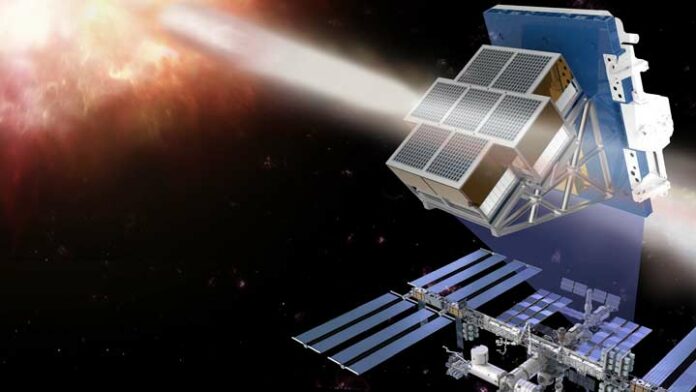HUNTSVILLE – A proposed space mission involving the University of Alabama in Huntsville has been selected by NASA for the second time as part of a group of four for a possible future deployment.
The LargE Area burst Polarimeter (LEAP) mission would be mounted on the International
Space Station to study gamma-ray bursts from the energetic jets launched during the
formation of a black hole after the explosive death of a massive star, or in the merger of
compact objects.

(Michael Mercier / UAH)
With the University of New Hampshire as its principal investigator, LEAP would record the polarization of high-energy gamma-ray radiation that vibrates in a particular
direction, which can distinguish between competing theories for the nature of the jets, according to NASA.
The mission’s ground operations manager is Dr. Robert Preece, an assistant director at the Center for Space Science and Aeronomic Research and associate professor of
space science at UAH.
“My role is to oversee the creation of an instrument operation center in New Hampshire and the science operation center at UAH,” said Preece. “The UAH team has expertise in all facets of flight software, ground operations and data analysis, based upon previous missions such as the Burst and Transient Source Experiment and the Gamma-ray Burst Monitor aboard the Fermi Gamma-ray Space Telescope.”
The Marshall Space Flight Center in Huntsville will provide program management under co-principal investigator Jessica Gaskin, a research astrophysicist.
The four missions selected by NASA for studies include two Explorer class and stand alone, meaning they get a ride into space and are cut loose, and two missions of opportunity, meaning they are attached to something in space.
LEAP falls into the MOO category, Preece said, since it is to be attached to the space station.
“Phase A is a nine-month period in which the instrument concept is refined,” he said. “It concludes with a site visit by NASA headquarters personnel and subject matter experts.”
NASA will winnow the choices in 2024, typically choosing one Explorer and one MOO. However, last time no MOOs were selected. Launches are expected in 2027 to 2028, Preece said
“LEAP would be carried into space inside the ’trunk’ of a SpaceX or equivalent spacecraft,”
he said. “While the spacecraft is docked on the station, the robotic arm will detach LEAP and carry it to its permanent location on the ISS. There, it receives power and access to data links to and from the ground stations, one of which I am responsible for creating at UAH.”
LEAP operates on the principle that gamma-rays, like all light, scatter in a preferred direction, he said.
“If enough of them scatter in the same direction, we can say that the light is polarized, as
you can easily see with a pair of polarized sunglasses,” Preece said. “Glare from horizontal surfaces is reflected largely horizontally, but the sunglasses only admit vertical polarized light, eliminating the glare. Rotate the sunglasses around by 90 degrees and you see the glare.”
Magnetic fields can act like the reflecting surfaces that produce glare, he said.
“So, if you have a gamma-ray polarimeter, you can remotely measure the magnetic fields of an astrophysical source without having to go there,” Preece said. “In turn, the magnetic field plays such an important role in the production of astrophysical jets that we are relatively blind to many of the processes involved.
“So, we must put on our gamma-ray sunglasses to see clearly what is going on out there.”
Don’t miss out! Subscribe to our email newsletter to have all our smart stories delivered to your inbox.



